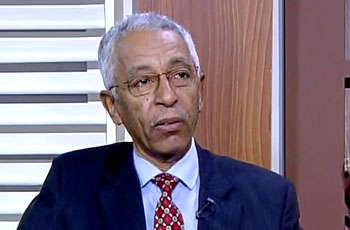Opinion
Reflections on Development Carried on the Wings of Hope for Ending War and Achieving Stability

By Dr. Al-Khidr Haroun
The memory still retains a television program titled The Grain Mafia, in which the renowned economist Professor Mohamed Hashim Awad, who taught at the University of Khartoum and briefly served as Minister of Economy during the May regime before resigning, discussed the existence of a grain mafia in the United States. The grain in question here is wheat, a strategic tool utilized by the U.S. to achieve its foreign policy objectives, employing both incentives and threats—the so-called carrot and stick approach.
Professor Awad recounted how Sudan transitioned from consuming sorghum and millet as staple grains to becoming heavily reliant on imported wheat. Initially, wheat consumption was confined mainly to Sudan’s Northern State due to its cold climate, suitable for cultivating wheat in winter. He explained how American wheat was initially provided as a free gift. By the mid-1960s, as women increasingly began working outside the home, people grew accustomed to wheat bread, appreciating its taste and ease of preparation. Over time, it became Sudan’s primary source of bread in urban areas, imported as a paid commodity like oil and its derivatives.
During my childhood, women in our neighborhood would bake kisra (a sorghum-based flatbread) daily at noon. When unexpected guests arrived, we were sent to the bakery, which we called tabouna, to buy some bread for a few coins. Bread would then be neatly arranged alongside the kisra on a tray.
In rural areas, wheat bread was virtually unknown until the early 1970s, when vendors began selling it from donkey carts, banging on boxes to attract attention. I remember an elderly Egyptian neighbor who would task us with collecting her daily bread delivery whenever she was away. As we grew older and moved out for work, living on store-bought bread led our mothers and aunts to lament: “Market bread! May God cut off bread!”
This reliance on wheat bread became deeply ingrained. Its aroma from local bakeries tempted many to eat it fresh and plain or as an accompaniment to foul (fava beans) seasoned with sesame oil and cumin. Over time, foul and wheat bread became inseparable staples of the Sudanese diet, complicating efforts to reduce dependence on imported wheat.
In one of his speeches, Egyptian President Gamal Abdel Nasser mentioned that the U.S. had been supplying Egypt with wheat worth $50 million annually since the 1950s, leveraging it as a political tool. Similarly, wheat has been wielded as a means of exerting political pressure globally.
During the Cold War in the 1980s, amidst fierce U.S.-Soviet rivalry, President Ronald Reagan approved U.S. wheat exports to the Soviet Union. This move surprised many, but it underscored the strategic role of American farmers in this equation. When wheat prices plummeted, the U.S. government purchased surplus stock to support its farmers and used it in diplomatic maneuvers.
Renowned scholar Professor Ali Mazrui, in his documentary series The Africans: The Triple Heritage, highlighted how wheat captivated Tanzanian leader Julius Nyerere, who granted a Canadian company rights to cultivate it in Tanzania. The venture, however, failed due to unsuitable weather conditions and soil. Yet, the local population had already grown accustomed to wheat bread, ensnaring the country in the “grain mafia” trap.
While Ethiopia recently began expanding wheat cultivation for export, Uganda has notably resisted wheat dependence, instead relying on its local staple, plantains (matoke), paired with fish. This highlights the importance of leveraging locally available food resources.
Sudan’s rich agricultural land and water resources make it a target of external ambitions. The key to its development lies in achieving political stability and embracing an agricultural renaissance. To this end, I propose:
1. Reevaluating Administrative Division: Establish a true federal system with six regions, each with an elected legislative and executive body, supported by a federal government in the capital.
2. Holding an Agricultural Conference: Convene experts in agriculture and livestock to create a strategic plan, utilizing mineral revenues like gold to support these sectors. Sudan’s fertile lands and vast numbers of agricultural graduates from the past five decades provide a solid foundation.
I consulted agricultural engineer Mustafa Ibrahim Abdulrasool, who has both academic and practical experience. He emphasized shifting focus from wheat to crops with comparative advantages for Sudan, such as sorghum, millet, and maize. Maize, in particular, is well-suited to Sudan’s climate and can support poultry farming and exports to Southern Africa.
Additionally, the government should cease subsidizing wheat imports, which cost double the global price, and promote crops like sunflower and cotton, which thrive in regions like Gezira and Blue Nile. Engineer Mustafa successfully experimented with potato and onion farming in semi-arid regions near Shendi, achieving groundbreaking yields through mechanized farming. Such innovations could revolutionize agricultural education and practices in Sudan.
Sudan also has untapped potential in horticulture (e.g., mangoes, grapefruit, bananas) and livestock. Improved infrastructure, such as roads and specialized railways, is critical to realizing this potential.
Efforts to stabilize Sudan must also include regional collaboration. Partnerships with neighboring countries could help transform Sudan into a hub for food production, benefiting all parties and fostering stability.
These scattered reflections, enriched by Engineer Mustafa’s insights, aim to spark ideas among specialists and contribute to Sudan’s path toward stability and prosperity.



